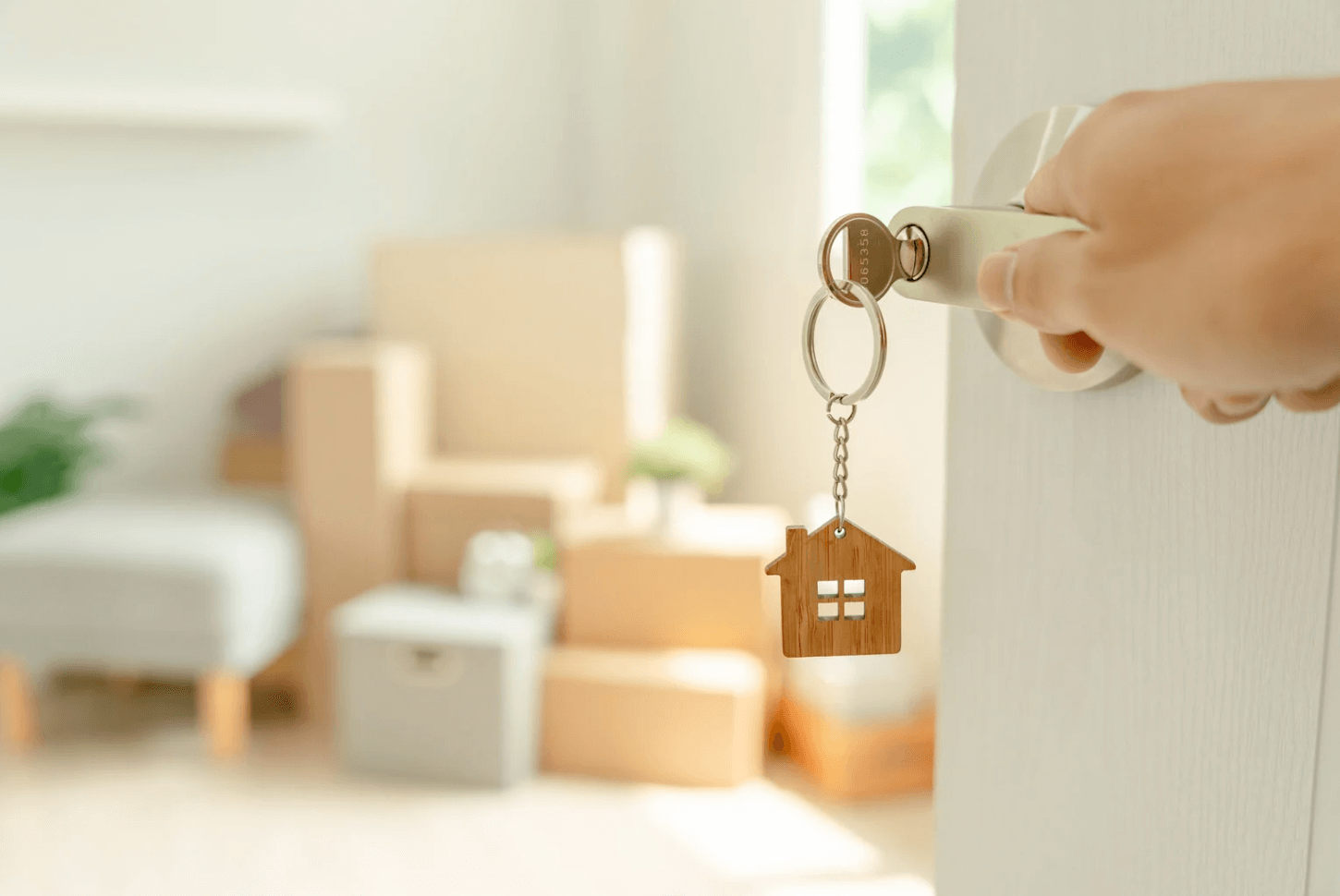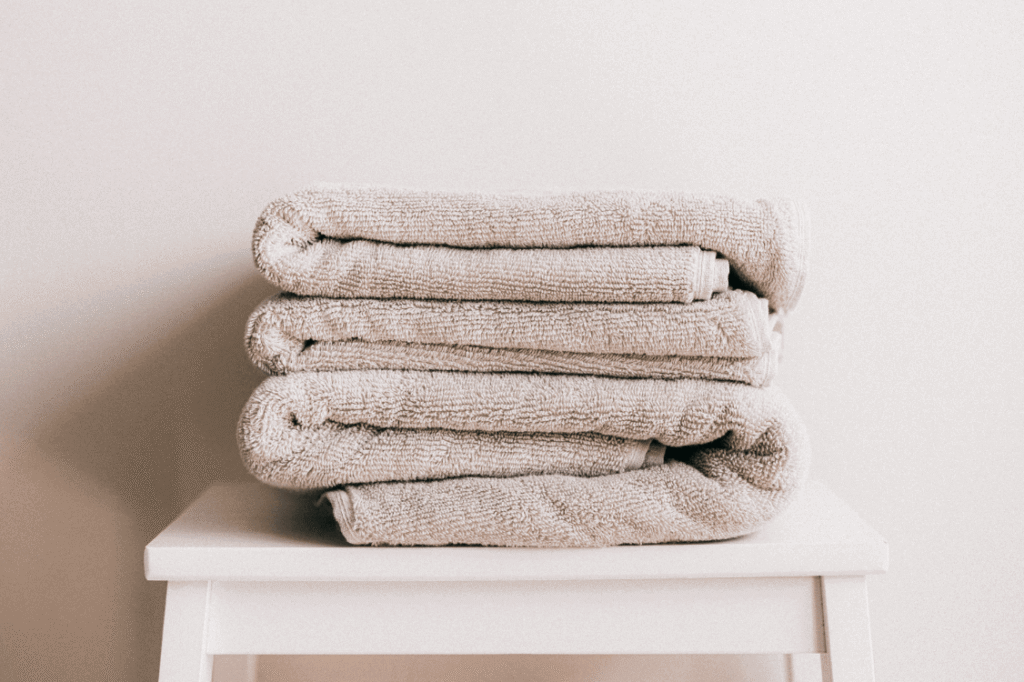The excitement of moving into a new house can be overwhelming. Between coordinating movers, unpacking boxes, and figuring out where everything goes, tasks often slip through the cracks. You focus on the big picture of getting your belongings from point A to point B while things of prime importance fall by the wayside.
Handling these overlooked tasks early ensures that your new home becomes comfortable and safe from day one. Some items on this list address security concerns. Others prevent future headaches or expensive repairs. A few make your transition smoother and more pleasant.
Use this checklist to avoid common move-in oversights. Taking care of these details before settling in completely will save you time, money, and stress in the long run.
1) Change the Locks and Secure Your Home
Previous owners, contractors, real estate agents, and maintenance workers may have copies of your house keys. You have no way of knowing how many duplicates exist or who possesses them.
Replace or rekey all exterior locks immediately after taking possession. This includes front doors, back doors, garage entries, and any other access points. Most hardware stores offer rekeying services for existing locks, which costs less than full replacement.
Consider upgrading to smart locks for enhanced convenience and security. Modern smart locks allow you to provide temporary access codes to guests or contractors without handing out physical keys. You can monitor entry activity remotely and receive alerts when doors open or remain unlocked.
Don’t forget about garage door openers. If the previous owners left one behind, reprogram the system with a new code. Older models may require replacing the entire opener unit for security.
2) Check Smoke Detectors and Carbon Monoxide Alarms
Home safety systems require immediate attention. Many people assume that existing smoke detectors and carbon monoxide alarms are working correctly, but previous owners may have neglected maintenance or temporarily removed batteries.
Test every alarm in your new home by pressing the test button. Replace any units older than ten years, as sensor effectiveness diminishes over time. Install fresh batteries in all functioning alarms, even if they currently work.
Place smoke detectors on every level of your home, inside each bedroom, and outside sleeping areas. Carbon monoxide detectors belong near sleeping areas and on every floor, particularly near attached garages or fuel-burning appliances.
Keep a fire extinguisher on each floor, especially in kitchens and garages. Verify that existing extinguishers haven’t expired and show full pressure gauges. Mount them in accessible locations where everyone can reach them during emergencies.
3) Locate Main Water Shut-Off and Breaker Panel
Plumbing disasters and electrical emergencies strike without warning. Knowing where to cut power or water flow prevents minor issues from becoming catastrophic damage.
Find your main water shutoff valve, typically located near the water meter, in the basement, or along an exterior wall. Turn it clockwise to stop the water flow. Test the valve to ensure that it operates smoothly. Corroded valves may require professional attention before emergencies arise.
Locate your electrical breaker panel and identify which breakers control specific areas. Previous owners may have labeled breakers, but these labels often prove inaccurate or outdated. Systematically flip breakers while someone checks which outlets and lights lose power. Create a clear diagram, labeling each circuit.
Write emergency shutoff instructions and post them near both the water valve and breaker panel. Include these locations in your household emergency plan so everyone knows where to go during crises.
4) Deep Clean Before Unpacking
Previous occupants’ cleaning standards may not match yours. Even professionally cleaned homes accumulate dust during vacant periods or from renovation work.
Clean kitchen, bathrooms, floors, and vents before furniture arrives and boxes pile up. Empty rooms provide easy access to baseboards, corners, and hard-to-reach areas that become more challenging once you’ve moved in completely.
Focus on high-traffic areas first:
- Scrub kitchen counters, cabinets (inside and out), and appliances.
- Disinfect bathroom surfaces, including often-forgotten areas behind toilets.
- Mop or vacuum all floors thoroughly.
- Wipe down light fixtures, ceiling fans, and window sills.
- Clean inside closets and cabinets where you’ll store belongings.
A fresh, clean slate makes unpacking more pleasant. You won’t second-guess putting dishes in cabinets or clothes in closets when you know everything has been thoroughly sanitized.
5) Inspect for Leaks or Maintenance Issues
Home inspections catch major problems, but minor issues often emerge after move-in. Addressing small concerns early prevents them from escalating into expensive repairs.
Check for plumbing leaks under sinks, around toilets, and near water heaters. Look for water stains on ceilings or walls, indicating roof leaks or pipe problems. Run water in all sinks, showers, and tubs while checking for proper drainage and leaks.
Test electrical outlets with a simple plug tester available at hardware stores. Replace any non-functional outlets or switches. Verify that GFCI outlets in bathrooms and kitchens trip and reset properly.
Run your HVAC system through heating and cooling cycles. Listen for unusual noises, check for adequate airflow from vents, and verify consistent temperature control. Strange sounds or weak performance may indicate the need for maintenance.
Document any issues you discover with photographs and dates. This creates records for warranty claims or future repair needs.
6) Update Your Address and Utilities
Administrative tasks are dull but require attention. Failing to update your address can lead to missed bills, delayed mail, and potential legal complications.
File a change of address with USPS at least two weeks before moving. This service forwards first-class mail for 12 months, buying time to update individual accounts.
Update your address with:
- Banks and credit card companies.
- Insurance providers (home, auto, health, life).
- Employer and payroll departments.
- Voter registration and DMV.
- Subscription services and online retailers.
- Medical providers and pharmacies.
Contact utility companies to establish services before move-in day. Schedule electricity, gas, and water activation for the day you arrive. Arrange internet and cable installation appointments early, as providers often book weeks in advance.
Confirm that services transfer properly by testing lights, heating, cooling, and internet connectivity on your first day.
7) Replace Air Filters and Clean Vents
Indoor air quality affects health and comfort. Previous owners may have neglected air filter maintenance, and construction dust often accumulates in ductwork during renovations or vacant periods.
Replace all HVAC air filters immediately, regardless of their apparent condition. Standard filters cost just a few dollars and significantly improve air quality. Note the filter size and purchase several replacements to maintain regular replacement schedules.
Clean air vents and returns throughout your home. Remove vent covers and vacuum visible dust from ducts. Wipe down vent covers with warm, soapy water before reinstalling them.
Consider professional duct cleaning if your home has been vacant for an extended period, has undergone recent renovations, or has had pets. Clean ducts reduce allergens and improve HVAC efficiency.
8) Set Up a Home Safety Kit and Emergency Plan
Emergencies happen when you least expect them. Preparedness reduces panic and keeps everyone safe during crises.
Prepare a home safety kit containing:
- Flashlights and extra batteries.
- First aid supplies and emergency medications.
- Bottled water and non-perishable food.
- Battery-powered or hand-crank radio.
- Emergency contact numbers and insurance information.
- Copies of essential documents.
Store kits in easily accessible locations on each floor. Consider additional kits for your vehicle and workplace.
Create and review an evacuation plan with your family. Identify two exit routes from each room. Designate a meeting spot outside where everyone gathers during emergencies. Practice the plan so children and other household members know what to do.
Post emergency numbers near phones or on your refrigerator. Include poison control, local police and fire departments, and utility company emergency lines.
9) Meet Your Neighbors and Learn About the Community
Building relationships with neighbors enhances security and creates support networks. Friendly neighbors watch for suspicious activity, accept deliveries, and provide assistance during emergencies.
Introduce yourself shortly after moving in. A simple knock on the door or a friendly wave while checking your mail opens the lines of communication. Ask about neighborhood norms regarding parking, trash collection, or noise levels.
Join local community apps or neighborhood groups. Platforms like Nextdoor connect you with nearby residents who share recommendations, safety alerts, and community news. These networks help you learn about local services, upcoming events, and area-specific information.
Attend community events or homeowners association meetings if applicable. These gatherings provide opportunities to meet multiple neighbors and understand community dynamics.
10) Personalize and Make It Feel Like Home
Moving creates stress and disruption. Transforming your new space into a comfortable, personalized environment reduces anxiety and helps everyone adjust.
Add décor that reflects your style and personality. Hang artwork, arrange photographs, or display meaningful objects. These familiar items create emotional connections to your new space.
Consider painting accent walls, changing light fixtures, or updating cabinet hardware. Minor cosmetic changes impact how a space feels without requiring major renovations or expense.
Arrange furniture to maximize comfort and functionality. Experiment with different layouts until you find configurations that work for your household’s daily routines.
Don’t rush this process. Settling in takes time. Focus on making essential spaces comfortable first: bedrooms for rest, kitchens for meals, and living areas for relaxation. Secondary spaces can wait.
Final Thoughts – Start Fresh the Right Way
Taking care of these overlooked steps helps you settle into your new home smoothly and safely. While unpacking boxes and arranging furniture dominate move-in activities, these foundational tasks create the security, comfort, and functionality that transform a house into your home.
Address security concerns immediately. Handle maintenance and safety issues early. Update administrative details promptly. Once everything’s in order, you can truly relax and enjoy your new space with peace of mind.
Moving involves much more than transporting belongings from one location to another. It calls for careful planning, systematic execution, and attention to countless details. For a stress-free move from start to finish, trust Clean & Careful Moving to handle your relocation with care and professionalism.
Our experienced team understands that successful moves go beyond loading trucks and unloading boxes. We help Orange County residents transition smoothly with transparent pricing, professional services, and genuine care for every item we handle.
- Call us: (949) 375-4629
- Email us: cleancarefulmoving@gmail.com
We serve all of Orange County, CA, and the surrounding areas. Let us move you safely, efficiently, and stress-free.


